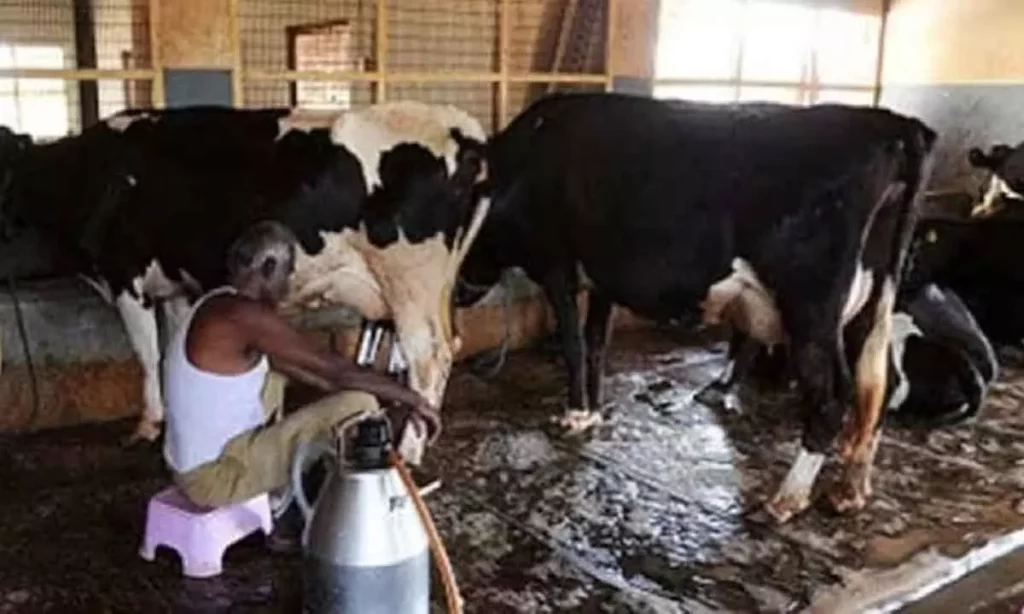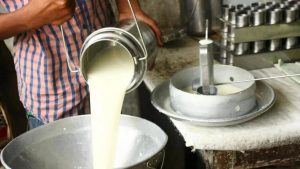
The gross Domestic Product (GDP) in India has undergone continuous structural changes wherein the share of agriculture has been continuously reduced from 42 % in 1970-71 to about 23 % in 2000-01 to about 14 % in 2020-21; moreover, the share of crop production in GDP has come down to around 10% ((GOI, 2021a).
These changes may have resulted in diversification in the sources of personal Income of various sections of the society, especially Agricultural Households (AHHs). The sources of income may serve as indicators of the real well-being of people in terms of their ability to buy products or services.
The author of this paper attempts to study the changes in principal sources of income of AHHs since 2002 -03 based on data from the Situation Assessment Surveys (SASs) in the 59th, 70th and 77th Rounds of National Sample Survey Organization (NSSO).
The growth rate in the income of AHHs will also reflect the success of the target set for doubling of farmers’ income by the Government of India in February 2016.
The above SASs were conducted in 2019, 2013 and 2003 (January –December) with reference years as 2002-03, 20012-13 and 2018-19(June to July), respectively (GOI, 2021b; 2014 and 2005).
An AHH was defined in SAS 2013 as a household receiving value of produce, more than Rs.3000/- from agriculture and having at least one member self-employed in agriculture either in the principal status or in subsidiary status during the last 365 days i.e. 2012-13.
The income ceiling was raised to Rs 4000 in the SAS 2019 to neutralize inflation. Whereas; in SAS 2003, it was not an AHH but a ‘farmer (household)’ who was defined as a person who possesses some land and is engaged in some agricultural activities on that land during the year 2002-03.
Thus, the data of SAS 2019 and SAS 2014 are strictly comparable while SAS 2003 data is broadly compared for the changes over time. The SAS 2019 estimates that about 93 million AHHs were living in rural India in 2018-19 and out of them about 45000 were surveyed in two visits from January to December 2019.
The categories of principal sources of income were almost the same in all these SASs, though in SAS 2019, the earning from the leasing out land is shown separately but we have clubbed in our analysis with the income from crop production. The principal source-wise income along with the share of each source in the total AHH income is shown in Table 1.

Source-wise Income
Table 1 shows that income from crop production & leasing out is 38.48 % in all of India, 42.53% in Haryana and 57.11 % in Punjab. If we take out about 10 % of income from leased- out land in Punjab (The highest in India) then its income from crop production is 47 %. As per SAS 2019, only a few states viz., Karnataka (51 %), MP (52%), Meghalaya (71%) and Telangana (52%) have more than 50 % income from crop production in the total HH income.
Besides, the income agriculture allied activities of live-stock farming is about 15%, 17% and 18 % in all of India, Punjab and Haryana. Share of livestock income in SAS 2019 has increased by about 4 % in all India, 7 % in Punjab and slipped by 1 % in Haryana over that of SAS 2014.
The sale of more fresh milk in Haryana due to the vicinity of metro cities like Delhi, Gurugram and Chandigarh may be one of the reasons for its higher income from livestock, especially dairy farming.
The combined income from crop farming and its allied activities of livestock is about 54 % in all of India, 74 % in Punjab and 57 % in Haryana in the year 2018-19. It may be concluded that most of the AHHs are still dependent upon agriculture and allied activities, though the agricultural dependency 3 has decreased in all of India and Haryana but increased in Punjab over 2012-13.
It may be one of the reasons for more protests on issues of agriculture in Punjab. The dependency on agriculture is positively associated with farm size. Across farm–sizes; the dependency on agriculture & livestock income is about 31 % for the sizes 0.01 to 0.4 ha whereas; it is about 74%, 83% and 92 % for farm sizes of 2-4 ha, 4-10 ha and above 10 ha, respectively
Changes Overtime
Despite the increase in the share of livestock income, the dependency on agriculture has come down from about 60 % in 2012-13 to 54% in 2018-19.
During this period, the decrease in dependency on agriculture is revealed in all farm sizes except the lowest, less than 0.01 ha. It may have increased for the marginal farmers due to more income support from Central and many state Governments before the general election of 2019. Income from non-farm activities like mining, quarrying, trade, small eateries, transport, construction, manufacturing and repair shops is about 6%, 8% and 11 % in all of India during NSS surveys in 2018-19, 2012-13 and 2002-03.
Perhaps, the abolition of reservation of some products for small-scale industries after 1991 especially from 2000 to 2015 may be one of the reasons for the decrease in the s mining, quarrying, trade, hotels/dabas, transport, construction, manufacturing and repairing instruments and other services are of income from NFB. This decrease in NFS income is visible for AHHs in Punjab and Haryana too.
Income from Wages and Salaries
At all India levels, income from wages/salaries is the largest source for the AHHs i.e. about 40%, though it accounts for just 22% and 34 % in Punjab and Haryana. Over 2012-13, it has increased by more than 7 % points in all of India, and 10% points in Haryana but decreased 4 % points in Punjab.
Punjab has recorded the maximum increase in live/dairy income which created employment at home. Moreover, this income is negatively associated with farm size as it was about 60 % for AHHs owning up to 1.00 ha while it was about 22 %,15 % and 6 % in farm sizes of 2-4 ha, 4-10 ha and above 10 ha at all India level in 2018-19.
Rate of Increase in Income
There is hype about doubling of farmers’ income, especially after its declaration by the Prime Minister on 28 February 2016. To assess the achievement of this goal, the annual growth rate in the income of AHHs is worked out for the 6 years periods from 2012-13 to 2018-19 and it is compared with the earlier period i.e. 2002-03 to 2012-13 of 10 years to assess perceptible changes in recent years.
To make it comparable, the incomes at current prices in the years 2002-03, 2012-13 and 2018-19 were converted into income constant prices by deflating with the index of wholesale prices (RBI, 2022). At all India, the annual growth rate at all India levels is slightly higher at 6.95 % during the recent period compared to 6.31% in the earlier period indicating a slightly higher growth rate in the income of farmers in recent years.
But it was much below the required growth rate of 10.4% to double farmers’ income during 7 years from 2015-16 to 2022-23. Moreover, in Punjab and Haryana; the growth rate of income of AHHs has almost halved in recent periods compared to earlier period. It means the productivity in these states may have reached the plateau whereas it may have increased in other states.
It may be due to higher procurement at MSPs of pulses and oilseeds in states other than Punjab and Haryana, especially after 201-17. Thus, both realized higher yields and prices may have pushed up the growth rates for states other than Punjab and Haryana.
Conclusions
The analysis first, revealed that the dependency of AHHs on agriculture income including income from livestock especially is decreasing in most of the states due to lesser income from crop production. However, Punjab has compensated with its dairy income and to some extent other states too.
Second, the wages and salary income has surpassed the income from crop production at all India levels. Third, the higher income of marginal farmers from leased out land indicates that farming may be unprofitable for them; hence they prefer to go for wage and salary work’.
On the other hand, the farmers owning 2-10 ha are leasing land to make use of their tractors and other machinery. Hence, the issues may be to protect the ownership of smaller farmers and at the same time legalize tenancy so that the middle farmers who are orally leasing in the land may get the benefit of insurance, crop damage compensation, credit and other government supports.

















